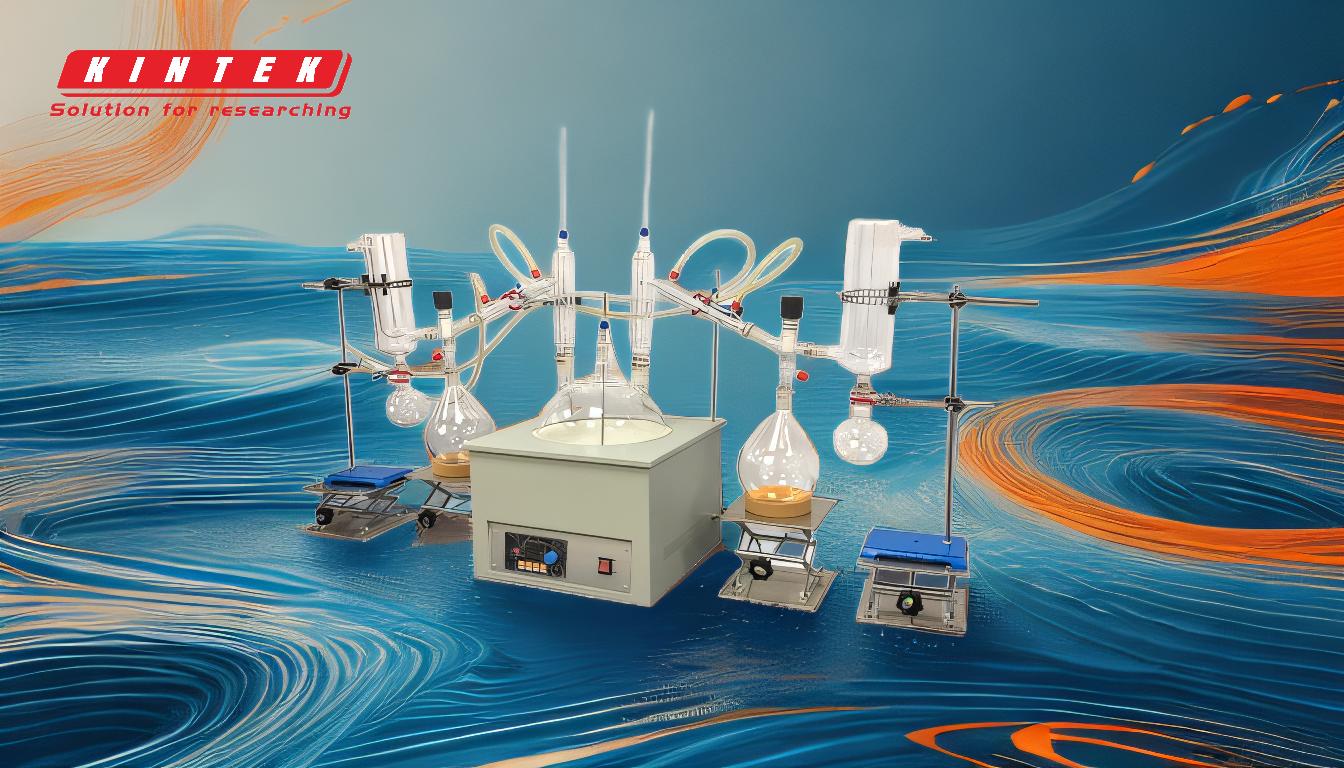Short-path distillation of cannabinoids is a specialized technique used to purify and separate cannabinoids from cannabis extracts. This method is particularly effective for heat-sensitive compounds like cannabinoids, as it operates under reduced pressure, lowering the boiling points of the components and minimizing thermal degradation. The process involves heating the cannabis extract in a flask, where the cannabinoids evaporate and travel a short distance to a condenser, where they are cooled and collected as purified distillate. This method is ideal for producing high-purity cannabinoid isolates, such as CBD or THC, and can be repeated multiple times to achieve the desired level of refinement.
Key Points Explained:

-
Definition and Purpose of Short-Path Distillation:
- Short-path distillation is a liquid-liquid separation technique used to purify compounds by evaporating and condensing them over a short distance under reduced pressure.
- For cannabinoids, this method is ideal because it minimizes thermal degradation, preserving the integrity of heat-sensitive compounds like THC and CBD.
-
How Short-Path Distillation Works:
- Heating and Evaporation: The cannabis extract is placed in a heated flask, where heat is applied to evaporate the cannabinoids. The reduced pressure lowers the boiling points of the compounds, allowing them to evaporate at lower temperatures.
- Short-Distance Travel: The vapors travel a short distance (often just a few centimeters) through fractionating tubing to a condenser.
- Condensation and Collection: The vapors are cooled in the condenser, turning them back into a liquid, which is collected as a purified distillate.
-
Key Components of a Short-Path Distillation Unit:
- Heating Flask: Where the cannabis extract is heated to initiate evaporation.
- Vacuum System: Creates the reduced pressure environment necessary for lowering boiling points.
- Fractionating Tubing: Connects the heating flask to the condenser, ensuring the vapors travel a short distance.
- Condenser: Cools the vapors, converting them back into a liquid distillate.
- Collection Flask: Stores the purified cannabinoid distillate.
-
Advantages of Short-Path Distillation for Cannabinoids:
- Preservation of Heat-Sensitive Compounds: The low-temperature operation prevents degradation of cannabinoids, ensuring high-quality, potent extracts.
- High Purity: The process can be repeated multiple times to achieve extremely pure cannabinoid isolates.
- Efficiency: The short distance between evaporation and condensation minimizes loss of material and energy.
-
Applications in Cannabinoid Extraction:
- Production of CBD and THC Isolates: Short-path distillation is commonly used to produce high-purity CBD and THC isolates for use in medical and recreational products.
- Refinement of Crude Extracts: It refines crude cannabis extracts into clear, potent distillates suitable for vape cartridges, edibles, and tinctures.
- Separation of Minor Cannabinoids: The technique can also isolate minor cannabinoids like CBG, CBN, and CBC, which have unique therapeutic properties.
-
Operational Considerations:
- Pressure Control: Maintaining a stable vacuum (typically under 1mbar) is critical for consistent results.
- Temperature Regulation: Precise control of heating temperatures ensures efficient evaporation without overheating.
- Multiple Passes: Running the distillate through the process multiple times increases purity but requires careful monitoring to avoid over-processing.
-
Comparison to Other Distillation Methods:
- Versus Simple Distillation: Short-path distillation is more efficient and produces higher-purity results due to its reduced pressure and shorter vapor path.
- Versus Fractional Distillation: While both methods separate components based on boiling points, short-path distillation is better suited for heat-sensitive compounds like cannabinoids.
-
Challenges and Limitations:
- Equipment Cost: Short-path distillation units are expensive and require skilled operators.
- Complexity: The process demands precise control of pressure, temperature, and flow rates.
- Scale Limitations: It is more suited for small to medium-scale production, making it less ideal for large-scale industrial applications.
In summary, short-path distillation is a highly effective method for purifying cannabinoids, offering advantages in purity, efficiency, and preservation of heat-sensitive compounds. However, it requires specialized equipment and expertise, making it a more advanced technique compared to simpler distillation methods.
Summary Table:
| Key Aspect | Details |
|---|---|
| Purpose | Purifies cannabinoids by evaporating and condensing under reduced pressure. |
| Key Components | Heating flask, vacuum system, fractionating tubing, condenser, collection flask. |
| Advantages | Preserves heat-sensitive compounds, high purity, efficient material usage. |
| Applications | CBD/THC isolates, refining crude extracts, isolating minor cannabinoids. |
| Operational Considerations | Requires precise pressure control, temperature regulation, and multiple passes. |
| Challenges | High equipment cost, operational complexity, limited scalability. |
Discover how short-path distillation can enhance your cannabinoid extraction process—contact us today for expert guidance!









